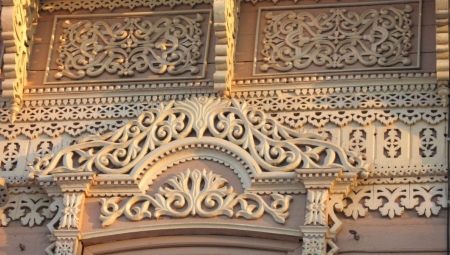Openwork can be weaving, embroidery, painting on fabric, but looks no less impressive openwork woodcarving. It was believed that such patterns were able to protect the home from the evil eye: the evil spirit entangled in the "curly" pattern, as in a trap. Therefore, the thread appeared on children's toys, utensils, furniture, spinning wheels.
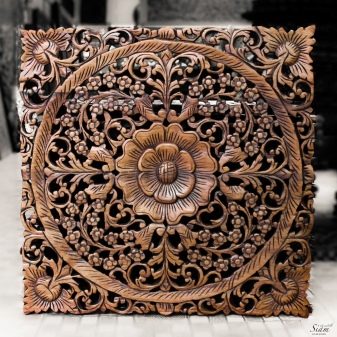
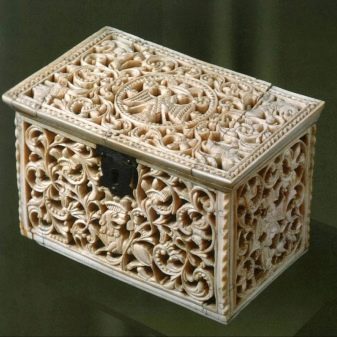
Features of the technique
Carved openwork carvings have a rich history. In Russia, its appearance is associated more with the spread of Orthodoxy. In the temples, openwork patterns were decorated with iconostases and altars, salaries for icons, icon cases (wall and floor).
The peak of creative thought was the royal gate, executed in the form of the Byzantine ligature, vine with fruits. Openwork carving, as historians and culturologists believe, appeared in Byzantium.
In domestic terms, the thread has reached a large development in the Petrine era. It should be noted that the emperor himself was a good carver, he also knew the turning business. This is your hobby. he brought from Europe: there, the tsar got carpentry tools, and already in Russia he ordered local craftsmen to make a lathe to carry out screw and lace parts. Carved ship decor, furniture with delicate patterns cleverly turned out in the hands of Peter.
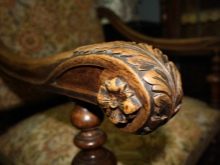
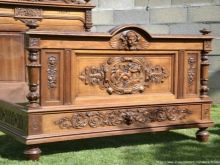
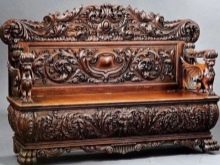
Interesting that and Catherine the Great She was also passionate about openwork carving, she was happy to do this not to say that it was a female affair. Although this statement can be argued: at the St. Petersburg Institute of Noble Maidens, art carving courses were held. It was believed that the girls involved in this craft grow aesthetically, improve their artistic taste.
Mostly sawn openwork carvings were used for the interior decoration of the home. She also decorated the pediments of houses, shutters and window frames, entrances.
We also made furniture and utensils, as well as shelves, hangers, spinning wheels, and broaches, using carvings. In Soviet Russia, children were also engaged in it: in many circles of pioneer houses, children studied ancient craft, and it was an honor.
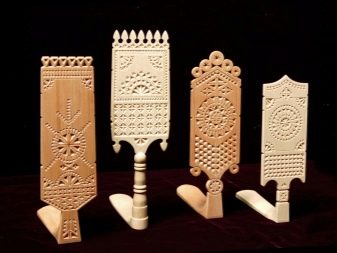
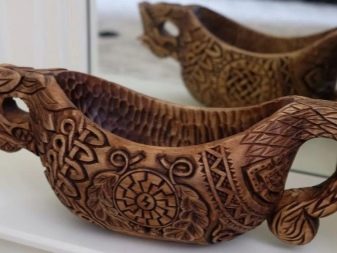
Today, openwork carving does not lose its significance - it is becoming the same decoration of furniture, interiors, facades of houses. The customer still prefers to decorate his life with natural materials and traditional design.
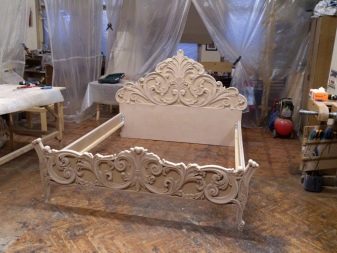

Where is it used?
First of all, it’s large and small interior elements. For example, wooden openwork partitions do not lose their popularity (and, perhaps, even more and more gain it). The chic zoning element in the kitchen-living room can be in the form of a partition with beautiful slotted patterns.
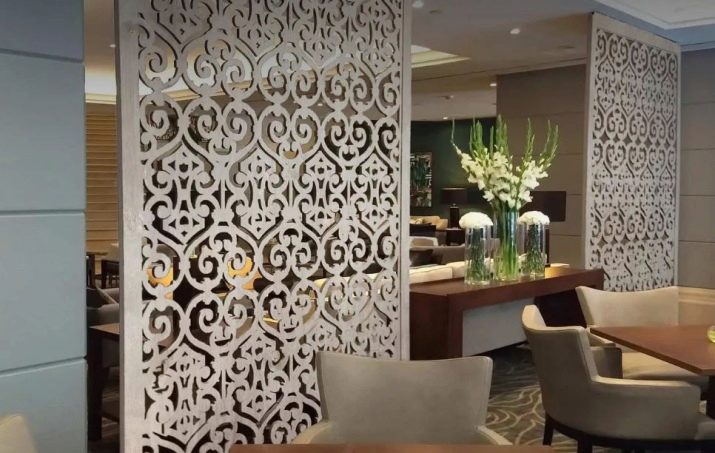
For furniture decoration carving is still used actively, and if not everyone can imagine such a design in the house, then for a summer house you want something beautiful, thin, evoking nostalgic feelings. Wood carving allows you to make beautiful openwork utensils and cutlery. And working with simple plywood, you can make interesting shelves or hangers.
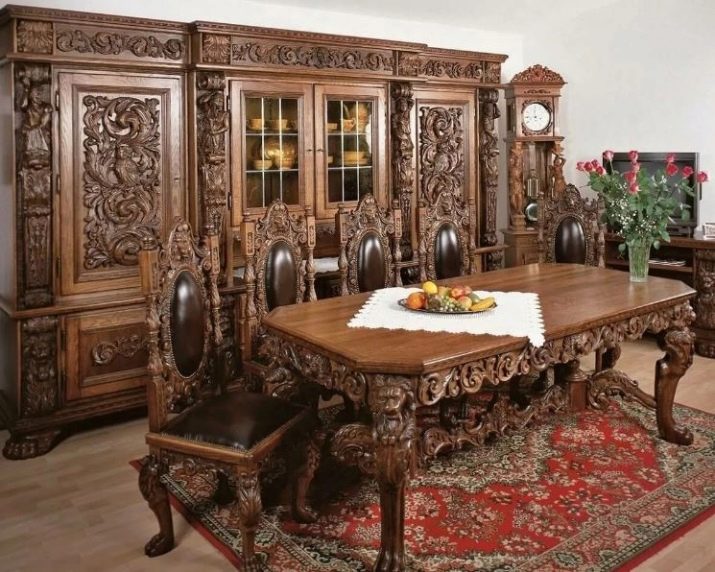
If the product is able to integrate into the already created interior, to become its harmonious part, then the openwork carving will be excellent way home decor. And since the interior trends of recent years have sung a hymn to natural and simple materials, natural shades and textures, traditionalism in choosing a style of decoration, you can definitely bet on openwork techniques.
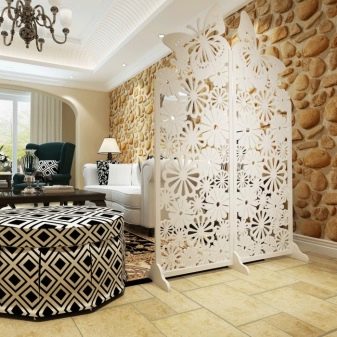
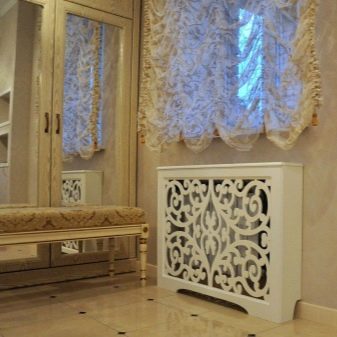
Comparison with other types of thread
Openwork carving is called such an artistic way of processing wood, in which the background is completely removed. The picture is, as the masters themselves say, “bottomless”. It is due to this that the product comes out light and airy, and therefore it acquires a special charm. Sometimes openwork carving is called through.
What is the difference between cross-cutting technology and flat-shaped technology: the latter has a background, a flat surface.
The drawing, thus, form a different shape and size of the recess and recess. There are several types of such carvings - geometric, contour and bracket.
In addition, with a flat-engraved carving, the pattern is removed in the background, and in a flat-relief carving it stands out over the background. It is worth mentioning for comparison also three-dimensional carving, which allows you to create three-dimensional wooden compositions. This is a sculptural carving, a special kind of art. It does not mean any slits or lack of background.
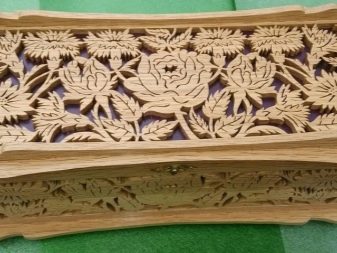
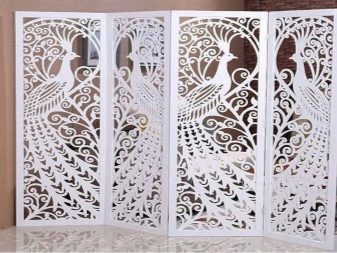
Pattern Overview
Wooden lace is formed in two ways: sawing and slotted. Each is interesting in its own way.
Propyl
Carpentry and carpentry tools are used to create them; for finishing, you will also need a chisel tool. Prop cutting is based on a plane through ornament. For example, the patterns of cut bands that are located on the house facades look incredibly beautiful.
And against the background of the wall, floral or geometric patterns of through curls and lines look luxurious.
In cutting carvings, craftsmen are very fond of looking at images of birds and animals. Female silhouettes are also popular topics, the basis of future patterns. The most sought-after element is an S-shaped curl with twisted tips.
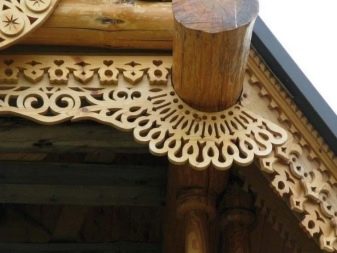
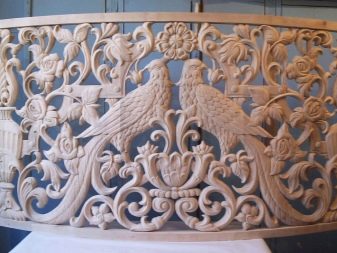
Slotted
Usually used in these patterns. flat ornament. Thread elements without a background are forced to touch each other and the frame. If the elements of the pattern are different in height, such a thread is called openwork. In the weld technique, the removed background sections are not the largest in size, but beautiful in shape. They form that attractive pattern that so distinguishes openwork carvings.
The main difference between the slotted patterns from the sawed ones is the way to obtain drop-out parts. So, in the slotted technique, the grid is made with a cutter, in sawing - with a circular saw. The theme of the patterns is similar: there are a lot of plant elements, there is an image of a person and an animal. Well and, of course, geometric patterns are also in demand.
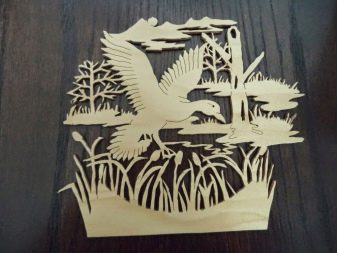

What tools are needed?
It’s worth starting with the description of the material. The tree must be of high quality, especially well-dried. The material is taken only homogeneous, preferably - from one section of wood, knots and rough texture stripes should also not be.
The basic set of tools includes:
- knives and chisels;
- Needle files
- hacksaws for metal;
- sandpaper with different grain sizes;
- vise;
- drill with variations of drills;
- bars;
- jigsaw.
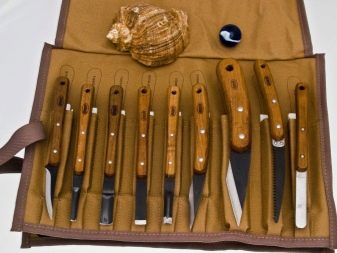
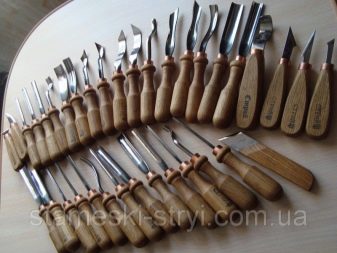
Knives should be made of quality steel. It may not be the most expensive domestic models, they are not much inferior to imported ones. Instead of chisels, sharpened screwdrivers or even a file. Chisel flat has a long shaft, at the end of which there is a cutting flat edge. It is convenient to use such a tool for primary processing of wood.
The semicircular chisel is the most important tool in the thread, its variations vary in the degree of roundness.
It is worth mentioning that the carver has all the tools divided into 2 types: manual and electric. Hand tools are relatively inexpensive, they are simple to operate. But manual labor does not have the highest productivity. Power tools help speed up and simplify woodworking. They cost more, but the quality of work with their use is increasing.
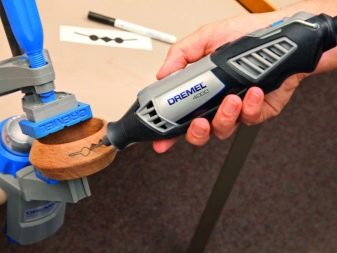
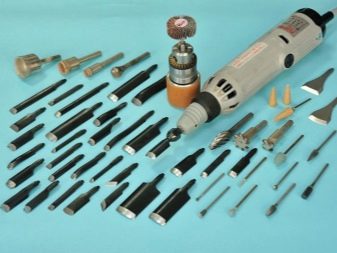
A few words about modern tools of carvers. Flexible shaft, for example, makes it possible to obtain a carved product of almost any complexity. And it costs not so much, often beginners get this tool for themselves. Or take laser engraver - This is a real multifunctional equipment, in which there is a stock of nozzles and different processing modes.
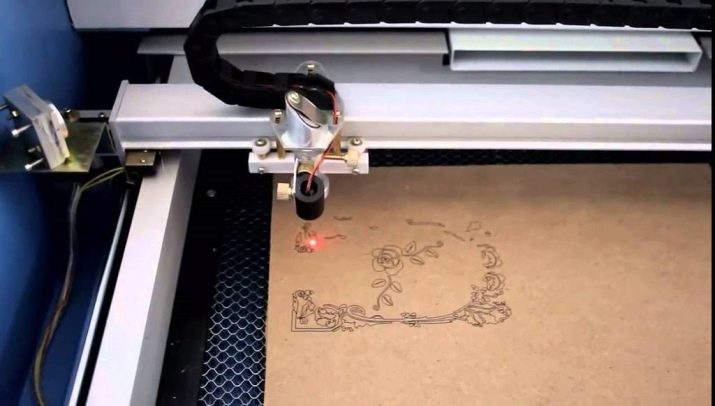
Execution technology
Openwork carving begins with a sketch of the future product.
Typically, draft sketches are first performed on a small scale, after the project is approved, you need to draw a sketch on paper in a 1: 1 scale with detailed detailing.
And to transfer an ornament (or an ornamental-plot composition) from paper to wood, you will need templates, carbon paper, pencil and tracing paper.
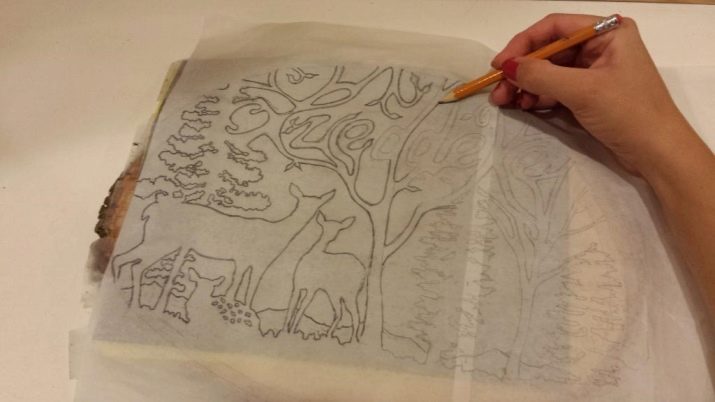
Consider the manufacturing algorithm of the product using the technique of openwork carving.
- The prepared material (wood) will have to be sawn, planed and trimmed. This is done either manually or at the power plant. Further, usually all the workpieces are calibrated on a thicknessing machine (to maintain accurate thickness).
- The material needs to be cut and cleaned, adjusted according to a pre-prepared form, and then glued to segments. An ornament can be applied to the finished form.
- Before you cut out the background part, you should prepare the form. That is, with a drill with the right diameter, a drill should make preparatory holes for the already applied picture.
- Next comes the most interesting stage of carving - performing artistic processing of slotted elements. It is always work with knives, chisels, and other tools convenient for the master. Each carver’s stage is different: someone cuts the parts for a long time, stretching the work for several days. Someone passes this stage quickly. It depends on experience and on whether the tools are familiar to the master.
- After the openwork art carving is completed, the master cleans the work well. If necessary, he polishes it and glues the product.
- At the final stage, the finished product is well inspected so as not to miss defects and rudeness. Now the tree can be polished with a piece of wood or a rough cloth. Completely finished work is treated with wood-based stain or alcohol. Not always one layer will be enough.
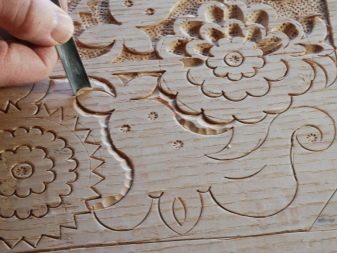
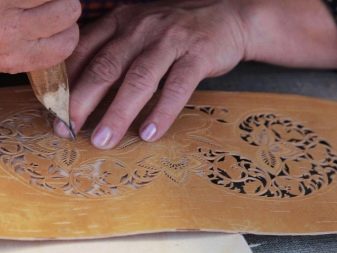
It remains only to wait for the complete drying of the product - it is ready and can take its place in the interior, on the facade or in any other place.
Openwork carving - This is experience, and artistic inclinations, and creative search, and the ability to see a work even before its readiness. One thing is for sure - the ancient craft today finds a new meaning and meets the needs of the modern customer. But the technique and material remain the same. And such a union of tradition, quality and a new look gives rise to beautiful fishnet things.
How to make a box of wood with slotted openwork carvings, see the video.
